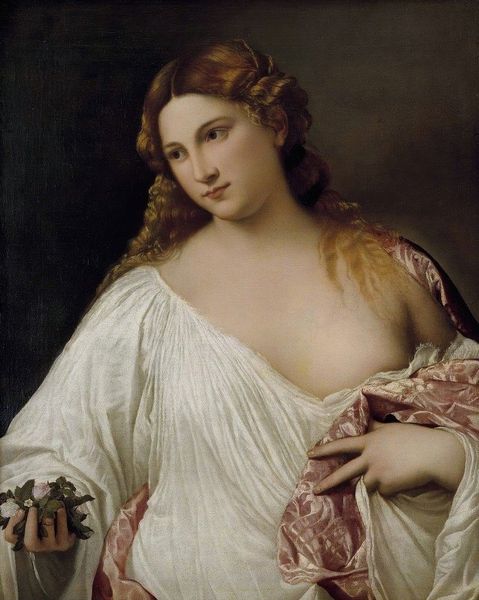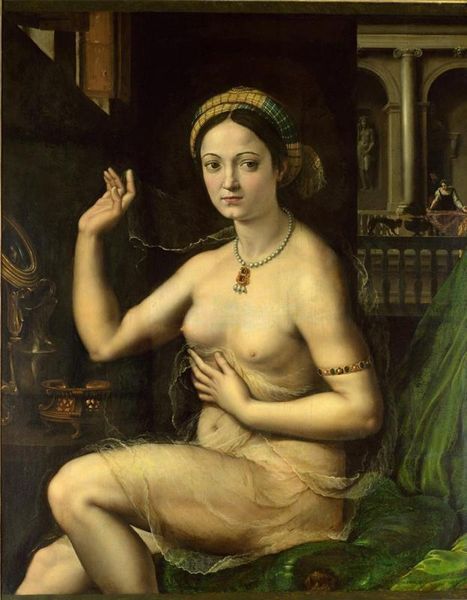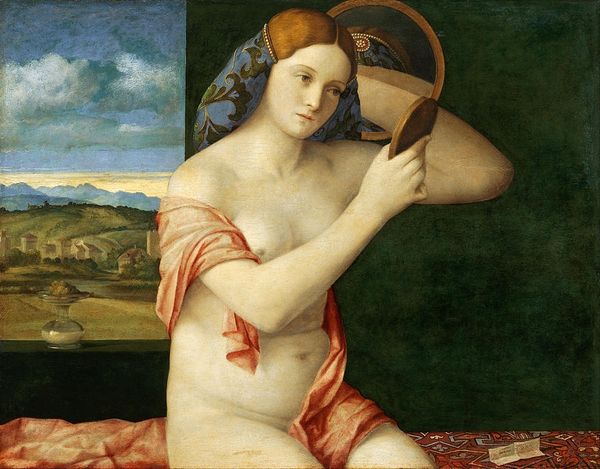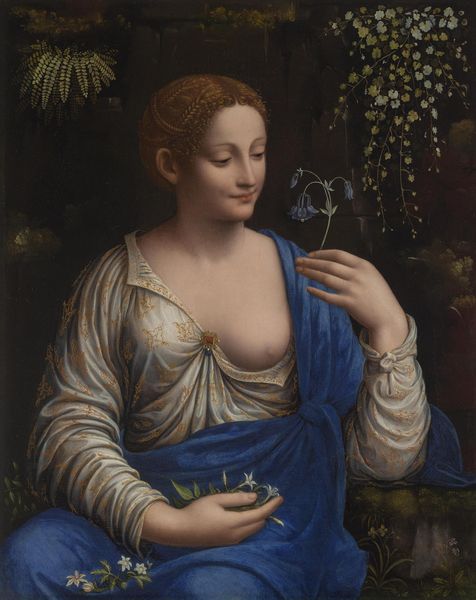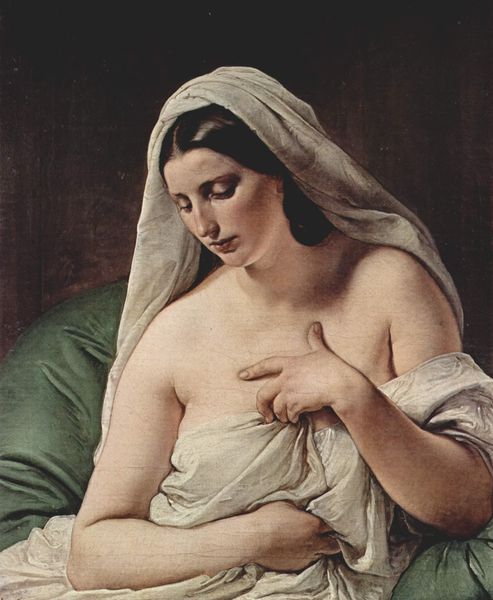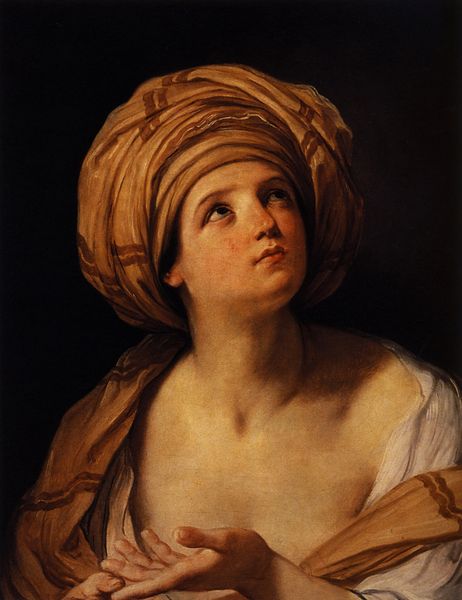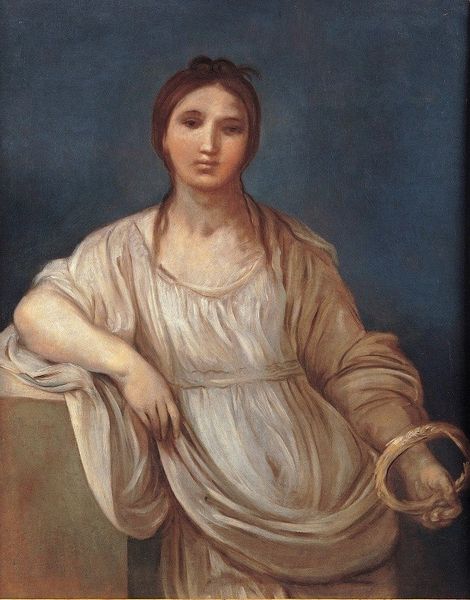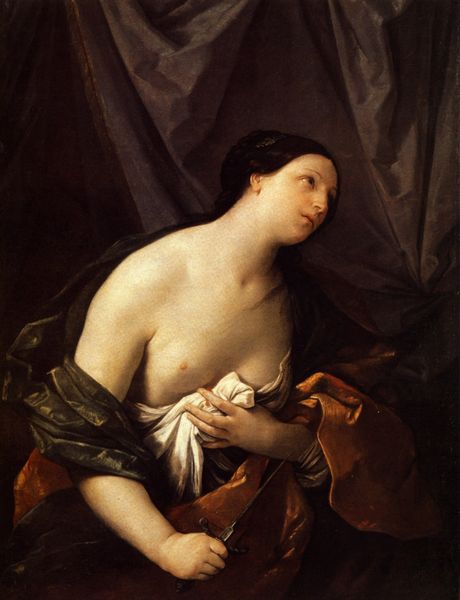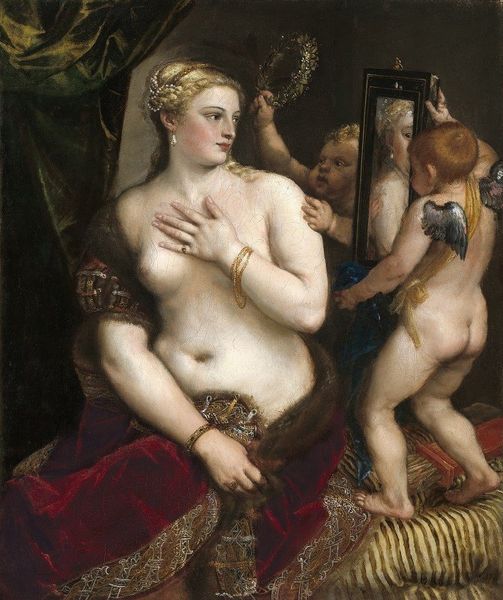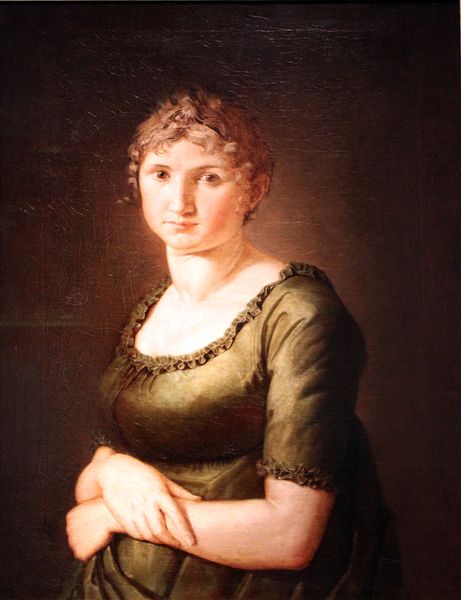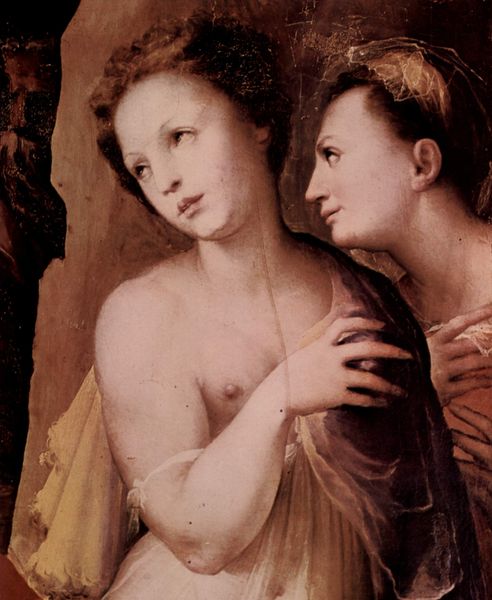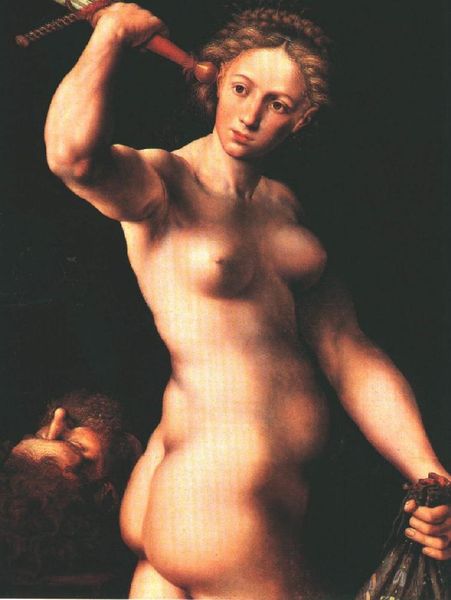
The Portrait of a Young Woman (La Fornarina) 1520
0:00
0:00
raphael
Palazzo Barberini, Rome, Italy, National Gallery of Ancient Art (GNAA), Rome, Italy
painting, oil-paint
#
portrait
#
high-renaissance
#
painting
#
oil-paint
#
figuration
#
italian-renaissance
#
nude
Dimensions: 60 x 85 cm
Copyright: Public domain
Editor: We are looking at Raphael's "The Portrait of a Young Woman," also known as "La Fornarina," painted around 1520. The oil on panel work strikes me as both intimate and subtly provocative, even vulnerable. What can you tell me about it? Curator: Considering the cultural context is vital here. Renaissance portraits, particularly those depicting women, often functioned within very strict parameters of display – often related to marriage or status. But “La Fornarina,” possibly Raphael's lover, departs from that. How do you think her direct gaze and semi-nudity challenges the expectations placed on women’s representation at the time? Editor: It feels very different from many other portraits of the period, much more sensual. Almost like she’s confronting the viewer on her own terms. Curator: Exactly. And if we think about the public role of art, who was this image for? While seemingly personal, the painting entered the public sphere, influencing perceptions of female beauty and artistic representation for centuries to come. Does this make you think differently about its intention? Editor: Yes, knowing that changes things. The private now feels… performed, almost? Curator: It also begs the question of agency. Is she an active participant or a passive subject? Does Raphael’s artistry empower her or further objectify her? Editor: It's a real tension, isn't it? I'm leaving with so many more questions now. Thanks! Curator: My pleasure. Considering those questions is a sign of art’s power to keep speaking across centuries.
Comments
No comments
Be the first to comment and join the conversation on the ultimate creative platform.
